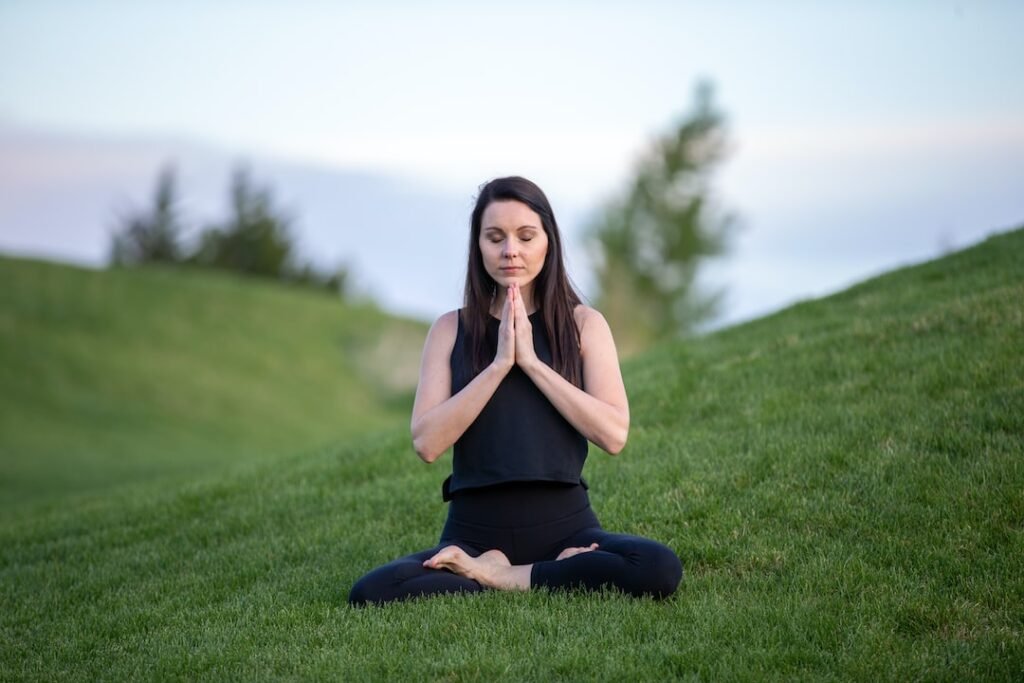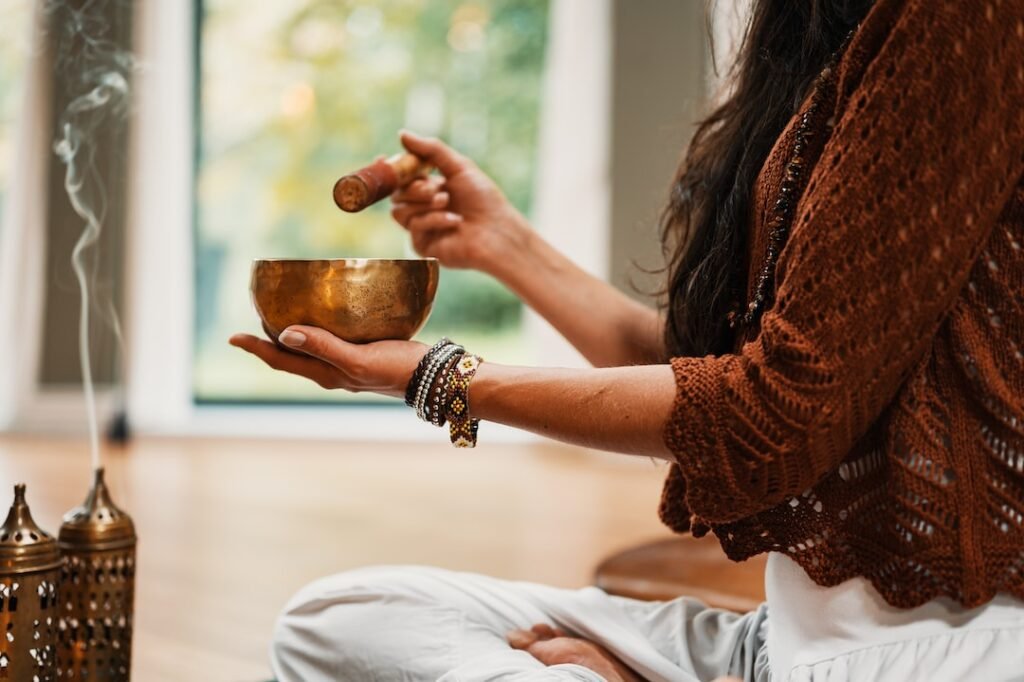
Table of Contents
Introduction
Meditation is an ancient practice that has been used for thousands of years to help cultivate inner peace, relaxation, and an overall sense of well-being. In recent years, the practice of meditation has seen a resurgence in popularity as more people recognize the many benefits that it can offer. Meditation can be used to help reduce stress and anxiety, improve concentration, and promote a sense of inner balance and harmony.
The process of meditation involves a journey of self-exploration and self-discovery that can be extremely rewarding and transformative. This journey begins with the decision to make meditation a part of your life and build a foundation for your practice. By creating a sacred space for your practice, developing an awareness of your breath, and learning the differences between guided and self-guided meditation, you can begin to take the first steps on your journey towards inner peace.
Meditation can be beneficial in many ways, from physical health to mental and emotional wellbeing. Regularly engaging in a meditation practice has been shown to reduce stress and anxiety, improve concentration and focus, and promote feelings of joy, contentment, and inner peace. Meditation can also be used to cultivate compassion towards oneself and others, as well as a greater appreciation of life and the world around us.
By taking the time to create a successful meditation journey, you can reap the many benefits that this practice has to offer. In this article, we will explore the various aspects of meditation and discuss how to create the foundation for a successful meditation journey. We will discuss how to create a sacred space for your practice, the importance of breath awareness, the differences between guided and self-guided meditation, and tips for successful meditation. Through this exploration, you can learn how to unlock the power of meditation and truly experience the richness and beauty of this ancient practice.
Creating a Sacred Space
Have you ever wondered why monks and dedicated yogis make such an effort to meditate within a specific space? The answer is the environment itself. When you create a dedicated space for meditation, it helps your practice. Using the same space for meditation each time creates a sense of familiarity and comfort which allows you to enter a meditative state with ease.
What Is A Sacred Space?
A sacred space is a space that has been devoted to a particular purpose. It could be a corner of your bedroom or living room, or an outdoor area that is special to you. The space should be free from distractions, with minimal furniture, and a pleasant atmosphere.
How To Prepare A Space For Meditation
Here are a few tips for creating a peaceful and inviting meditation space:
1. Lighting – Make sure the space is well lit, as this will help you to feel comfortable and relaxed. Avoid any harsh or glaring lights. Candles or dimmed lighting are both great options.
2. Decor – Choose calming colors and decorations that reflect your style and personality, such as a painting, a special rug, or a piece of furniture.
3. Comfort – Make sure the space is comfortable and inviting. Add a meditation pillow or cushion, a blanket, or a cozy chair.
Benefits Of Creating A Sacred Space
There are numerous benefits to creating a sacred space for meditation. Here are just a few:
1. Focused Attention – Having a designated space for meditation helps to keep you focused and allows you to go deeper into the practice.
2. Comfort and Relaxation – Creating a sacred space that is comfortable and inviting helps to create a sense of relaxation and ease, which is necessary for successful meditation.
3. Clarity and Insight – When you meditate in the same space each time, your practice can become more powerful and insightful as you become more familiar with the space and its energy.
4. Setting Intentions – Having a dedicated space for meditation can help to focus your intentions and ensure that the purpose and outcome of each practice is clear.
Creating a sacred space for meditation is a powerful way to deepen your practice and create a sense of peace and calm. By following these tips and creating a comfortable and inviting atmosphere, you can create a space that will help you to reach new depths in your meditation journey.
Breath Awareness and its Vital Role in Meditation
Breath awareness plays a central role in meditation and can be a powerful tool for cultivating inner peace. The practice of breath awareness involves becoming more mindful of your breathing and focusing your attention on the sensation of your breath as it moves in and out of your body. Becoming aware of your breath can help to ground you in the present moment and can be a powerful tool for cultivating self-awareness and stillness.
The key to utilizing breath awareness in meditation is to focus your attention on the sensations of your breath. This requires that you become more mindful of your breathing and observe the movement of air as it enters and exits your body. To help you become more aware of your breath, it is helpful to place your hands on your abdomen and focus on the rise and fall of your chest and abdomen as you breathe. Doing this encourages slow and deep abdominal breathing and helps to reduce stress and anxiety.
When you are aware of your breath, you can use it to enter a meditative state. To do this, you can consciously slow down your breathing and focus your attention on the sensation of your breath as it moves through your body. By doing this, your body will relax and you will begin to enter a meditative state. This can be done either sitting or lying down, and can be done on its own or in conjunction with a mantra or visualization.
The importance of breath for meditation cannot be overstated. Breath awareness helps to bring the mind and body into a state of coherence and can be used to help you cultivate a greater sense of peace and presence. It also helps to reduce stress and anxiety by helping to bring the body and mind into a relaxed state. Finally, breath awareness can help to deepen and sustain your meditation practice, as it provides an anchor for your attention and helps you maintain focus and clarity throughout your practice.
Ultimately, breath awareness is a vital part of any successful meditation journey. Becoming mindful of your breath can help to cultivate inner peace and can be a powerful tool for helping you to relax and enter into a meditative state. Additionally, breath awareness can help to deepen and sustain your meditation practice, as it provides an anchor for your attention and helps you stay focused and relaxed.

Guided vs. Self-Guided Meditation
When it comes to meditation, there is no one-size-fits-all approach. Different people find different methods more effective, depending on their individual needs and preferences. Whether you are a seasoned meditator or just starting out, it is important to understand the differences between guided and self-guided meditation and how each option can help you create your own unique meditation journey.
The first difference between guided and self-guided meditation is that guided meditation is done with the help of an instructor or facilitator. This person will guide you through the meditation process, providing verbal instruction and cues as well as visual and auditory aids. The benefit of guided meditation is that it facilitates a deep relaxation response and provides structure and support. This can be especially helpful for people who are new to meditation or have difficulty getting started.
On the other hand, self-guided meditation is done without the assistance of an instructor. Instead, you are responsible for setting your own intentions, choosing what type of meditation to practice, and creating your own visualizations. The benefit of self-guided meditation is that it gives you complete freedom to explore different techniques and customize your meditation session to your individual needs.
When it comes to guided vs self-guided meditation, both have distinct benefits. Guided meditation helps give structure to the practice, while self-guided meditation encourages freedom and creativity. Ultimately, it is up to you to decide what type of meditation works best for you.
In terms of the steps involved in each type of meditation, the basic process is the same. You will begin by creating a comfortable, quiet space to meditate. Then, you will focus your attention on your breath, allowing yourself to relax and become more present. Once you reach a calmer state, you can either begin a guided meditation session with an instructor or practice a self-guided meditation technique.
When it comes to guided meditation, the instructor will provide verbal instruction and cues, as well as visual and auditory aids. The instructor will also guide your practice, giving you a roadmap for where to focus your attention. With self-guided meditation, you can explore different techniques at your own pace. You may choose to visualize your breath, practice mindfulness, or explore any other type of meditation technique that resonates with you.
Regardless of which type of meditation you choose, the important thing to remember is that consistency is key. To get the most out of your practice, it is important to stick to a regular schedule and make sure you have enough time to explore and experiment with different meditation techniques. Taking the time to explore guided and self-guided meditation can be a powerful way to deepen your practice and cultivate inner peace.
Tips for Successful Meditation
Meditation is an incredibly powerful tool for achieving inner peace and having a more fulfilling life. However, it is not something that can be mastered overnight and requires patience and dedication. There are many tips that you can follow to ensure that you have a successful meditation journey.
Setting an Intention Before Meditating
Before you begin your meditation journey, it is essential to set an intention. To do this, take a few moments to focus on what it is that you wish to achieve from your meditation session. Consider what it is that you want to bring into your life as a result of your meditation. This could be physical, mental, spiritual, or emotional. By setting an intention, you will be more likely to achieve the desired outcome of the meditation.
Sticking to a Meditation Practice
Once you have set your intention, it is important to establish a daily meditation practice. Even if it’s only for a few minutes each day, it is important to keep up your practice in order to ensure that you make progress in your journey. Try to make it a habit and instead of seeing it as a chore or something that you have to do, view it as an opportunity to give yourself time and space.
Letting go of Expectations
It is also important to remember to let go of expectations. Everyone’s experience of meditation is different, so try not to compare yourself to anyone else. It is also essential to be patient, as it may take some time before you start to experience the full benefits of meditation.
Trying Different Techniques
There are many different techniques in meditation, so it can be helpful to try out different approaches to find what works best for you. Experiment with different poses and breathing techniques until you find what is most comfortable for you. Additionally, there are many guided meditations available online and on streaming services that can help to get you started.
Making Time to Meditate
Finally, it is important to make time for your meditation practice. It is easy to get caught up in life and neglect to take care of ourselves. Take the time each day to give yourself a few minutes of inner peace and quiet. This will help to ensure that you have a successful meditation journey.
By following these tips, you will be able to create a successful meditation journey. From setting an intention before meditating to making the time to practice, these tips will help to ensure that you make the most of your meditation journey. With patience and dedication, you will soon be on your way to achieving inner peace and a more fulfilling life.

Conclusion
Meditation is a journey that can transform your life and bring inner peace and balance. With the right steps, anyone can make their meditation journey successful.
The first step is creating a sacred space, which can help you feel more connected and comfortable with your practice. This space should be free of distractions and have calming elements that help you achieve a meditative state. Once the space is prepared, you can begin to focus more on your breath. Breath awareness is essential for meditation, as it allows you to become more present and mindful. Additionally, it can help you enter and maintain a meditative state.
To make the most out of your meditation journey, you can also choose between guided and self-guided meditation. Guided meditation allows you to be guided by someone else, while self-guided meditation involves setting your own intention and practice. Both have their benefits, so you can select the one that is best for you.
Finally, to ensure success in your meditation, it is important to set an intention before meditating, stick to a routine, and let go of expectations. Every meditation is unique and requires patience and self-compassion.
In conclusion, meditation can be an incredibly powerful and transformative journey. By creating a sacred space, focusing on your breath, understanding the difference between guided and self-guided meditation, and setting an intention, you can start to make your meditation journey successful and find inner peace.
Join the Realty Banker Network and stay ahead of the competition. Connect with us on
Youtube, Facebook, TikTok, Instagram and Twitter. We hope to see you there.

